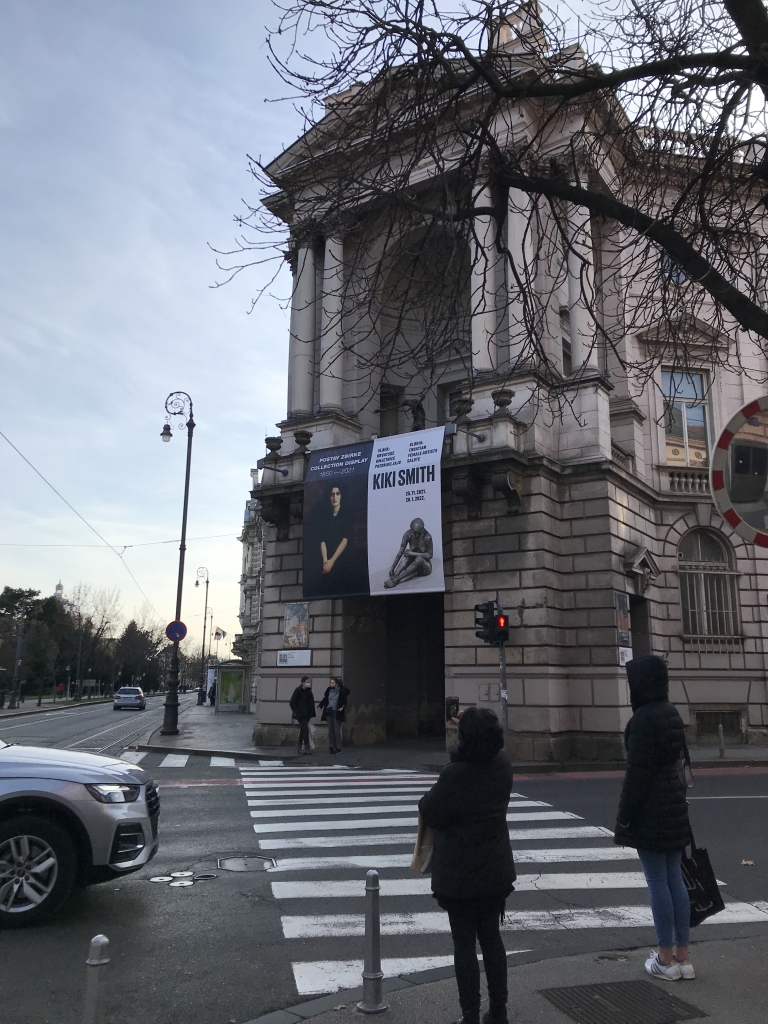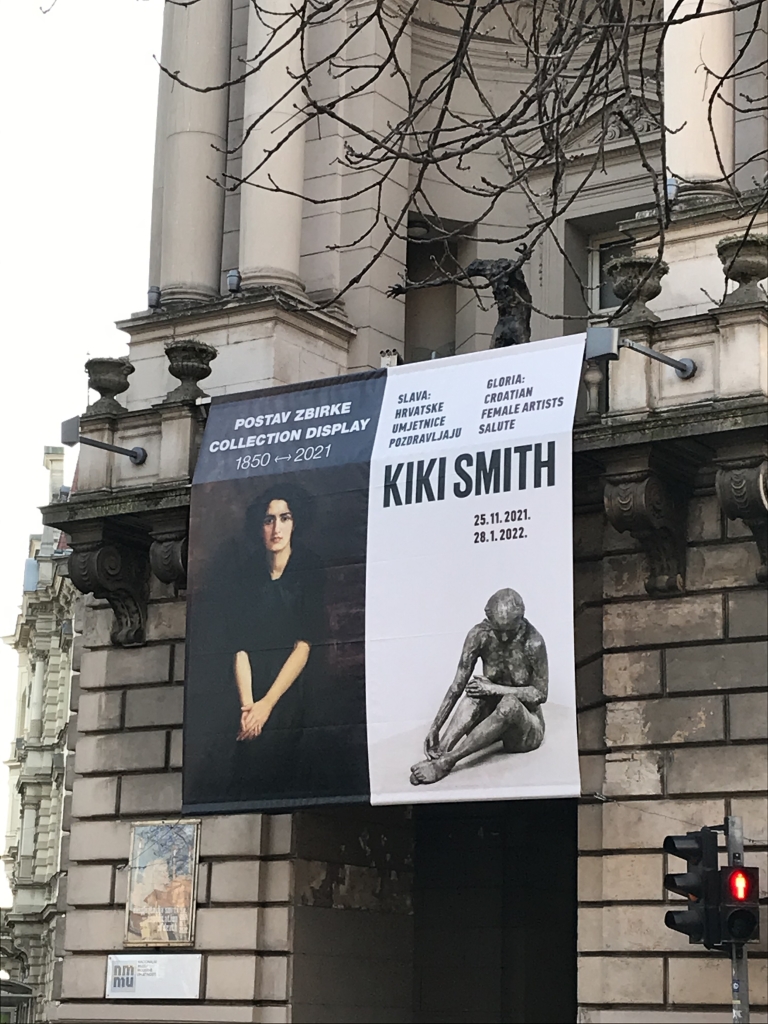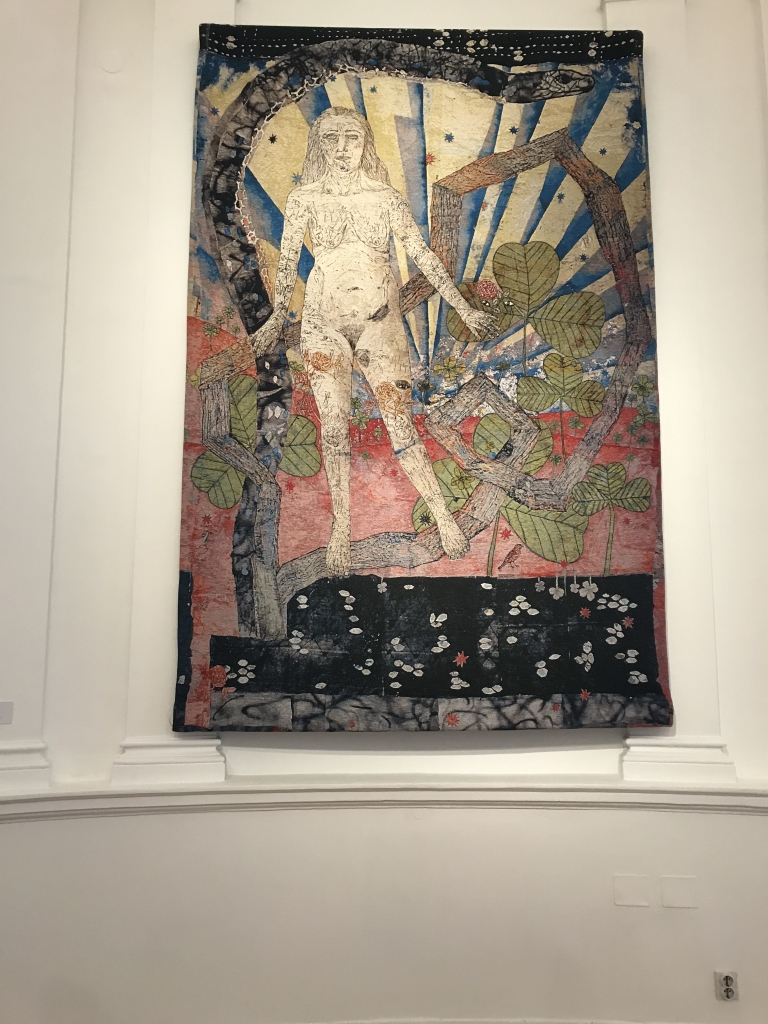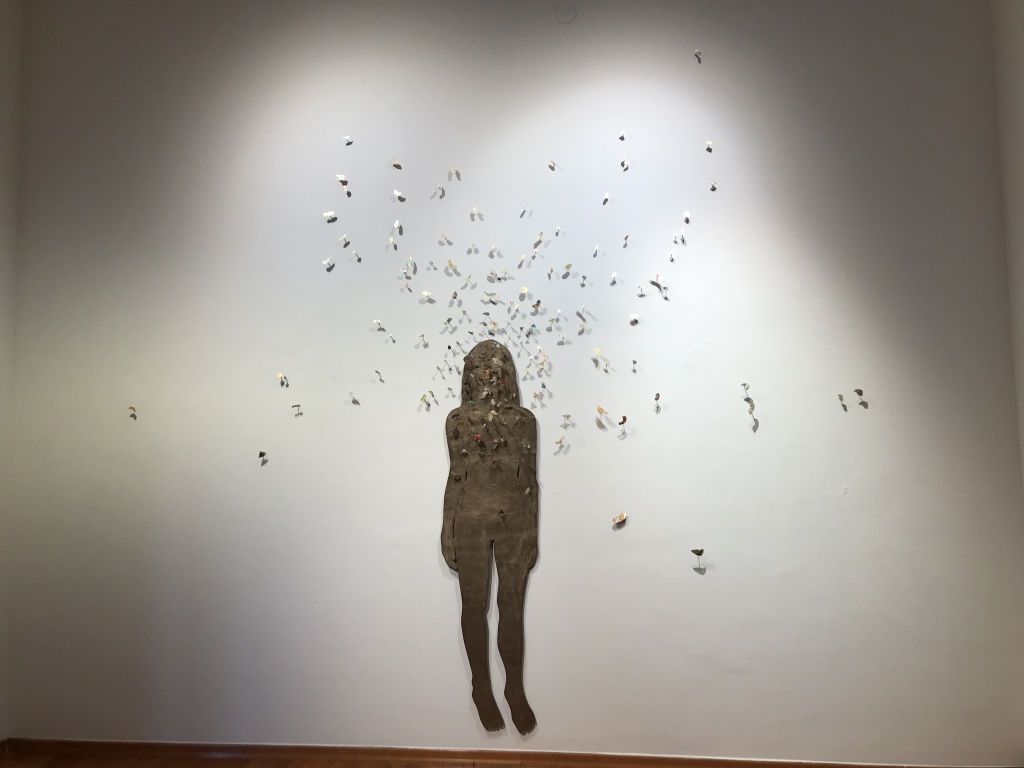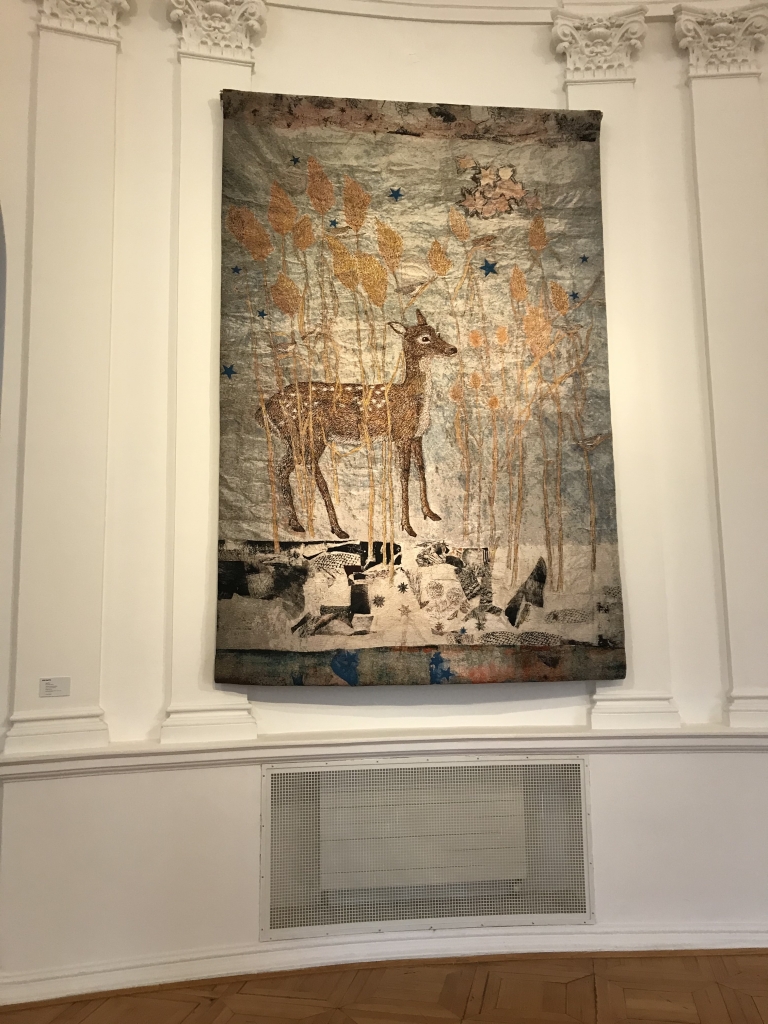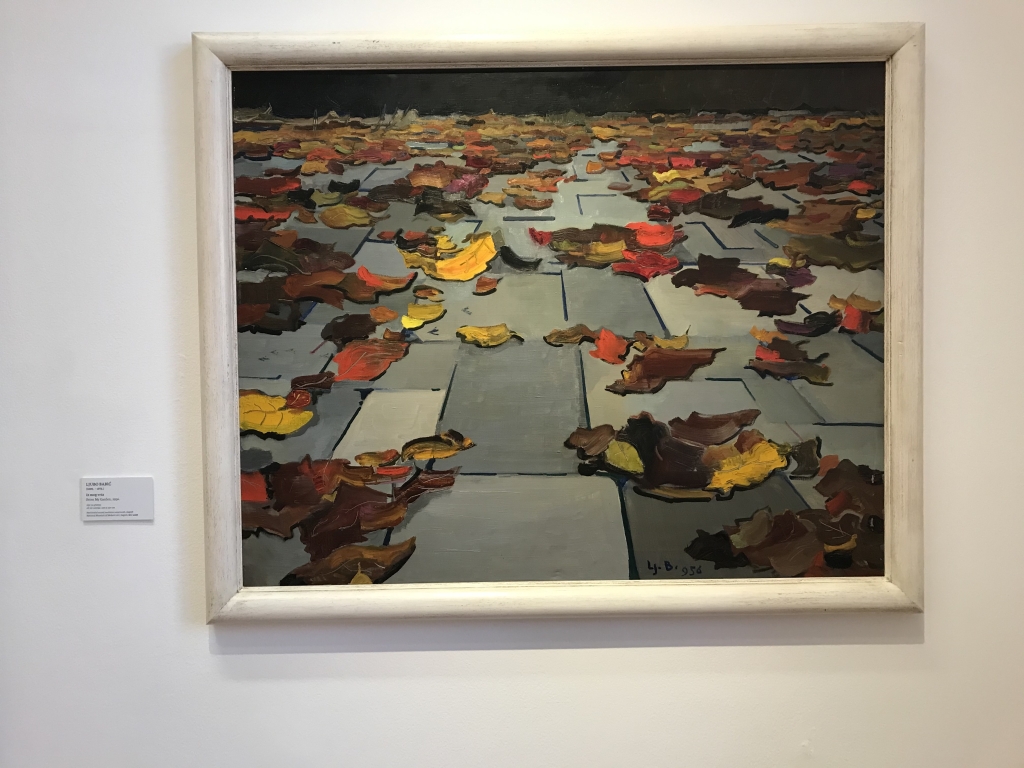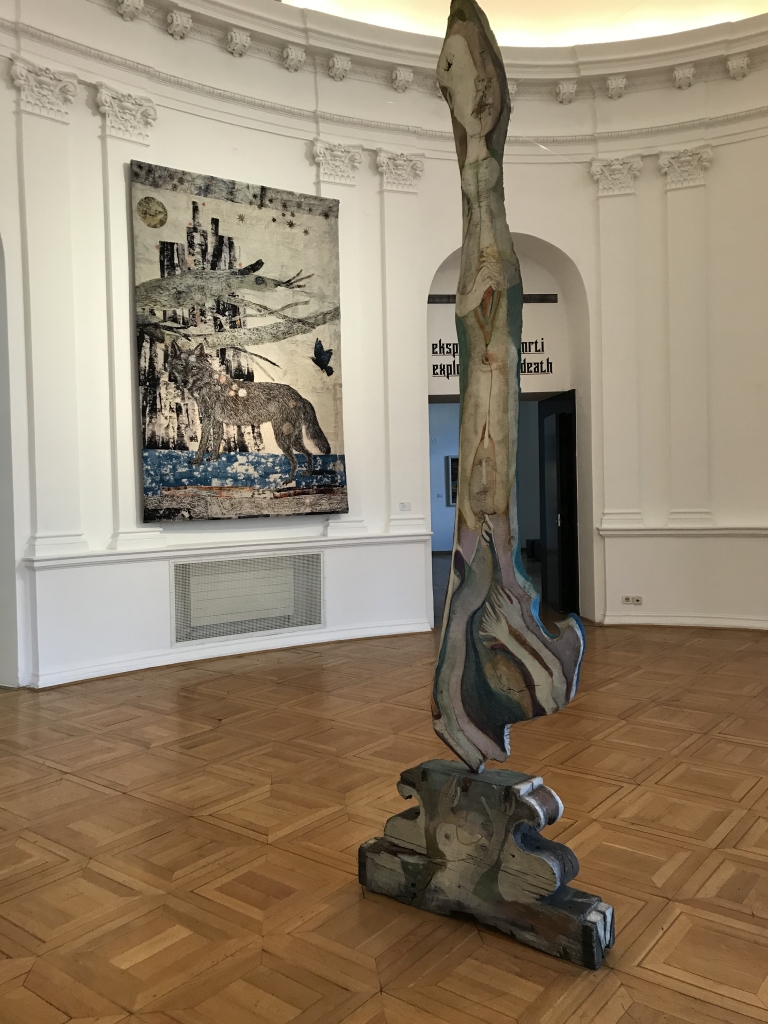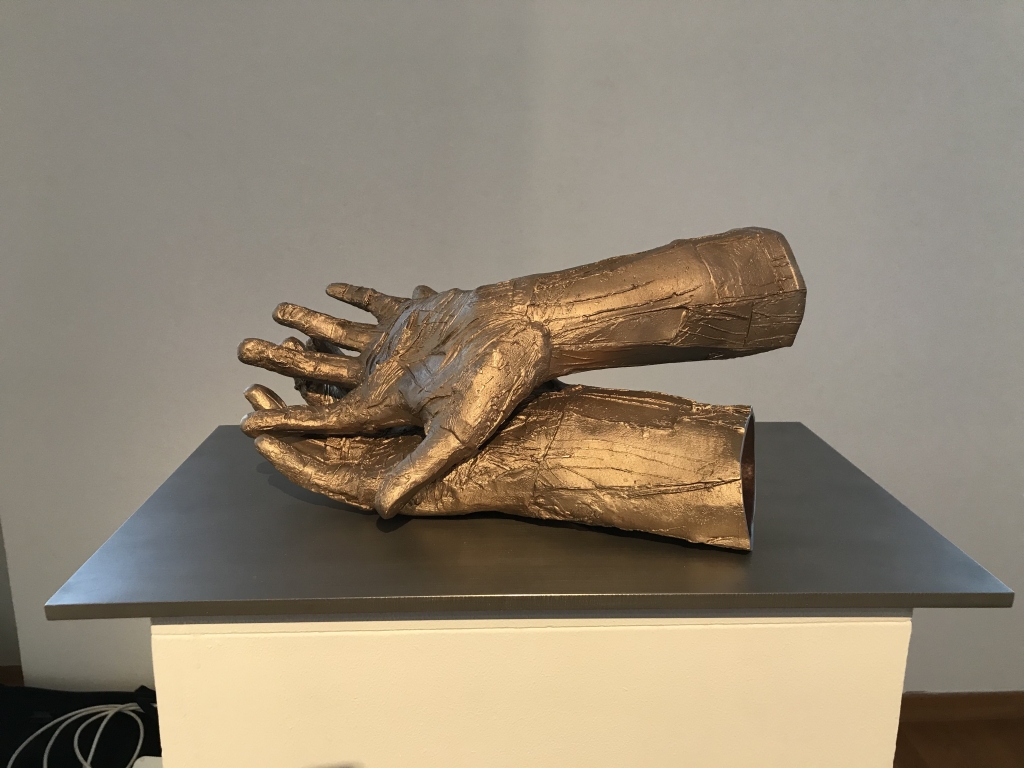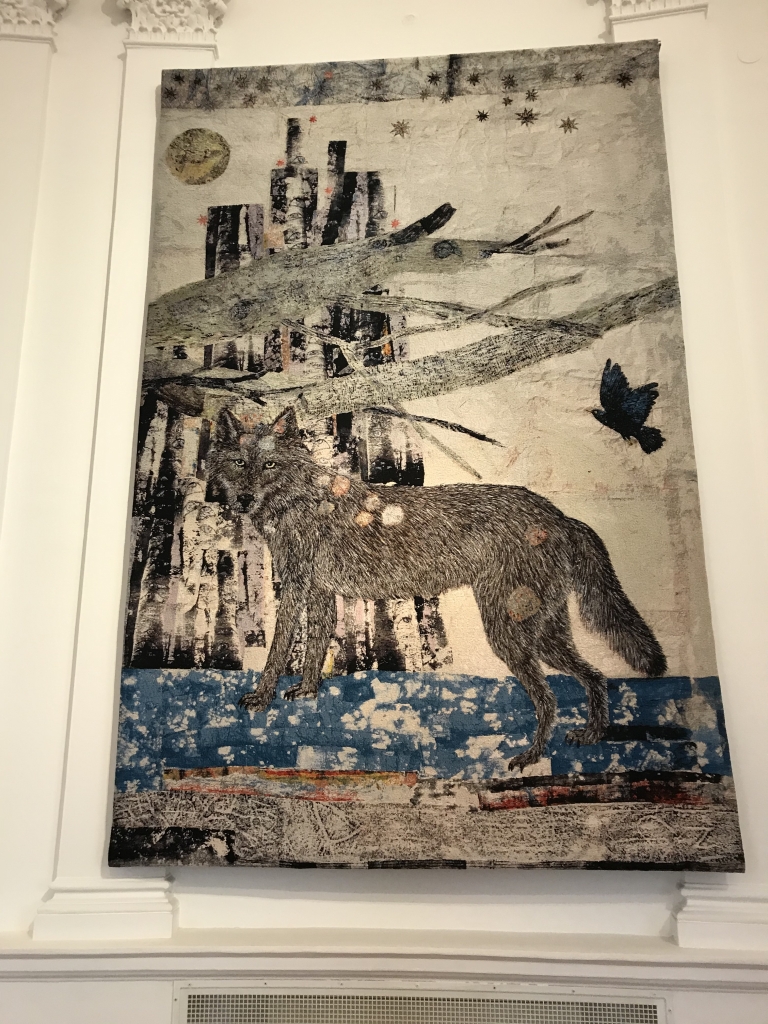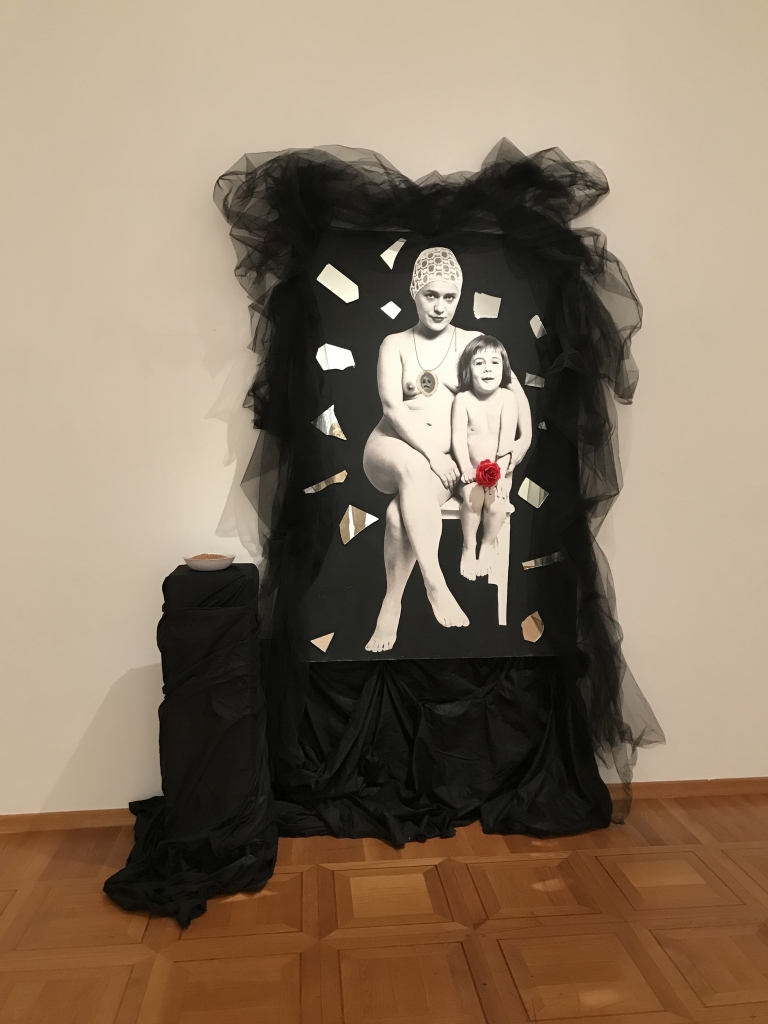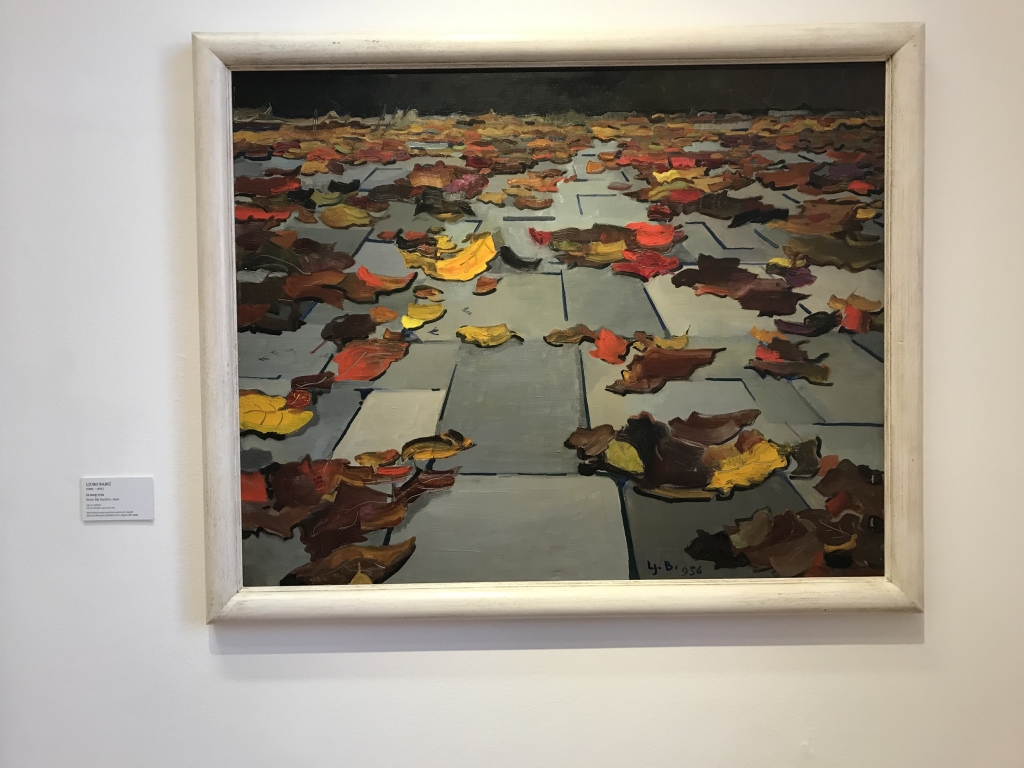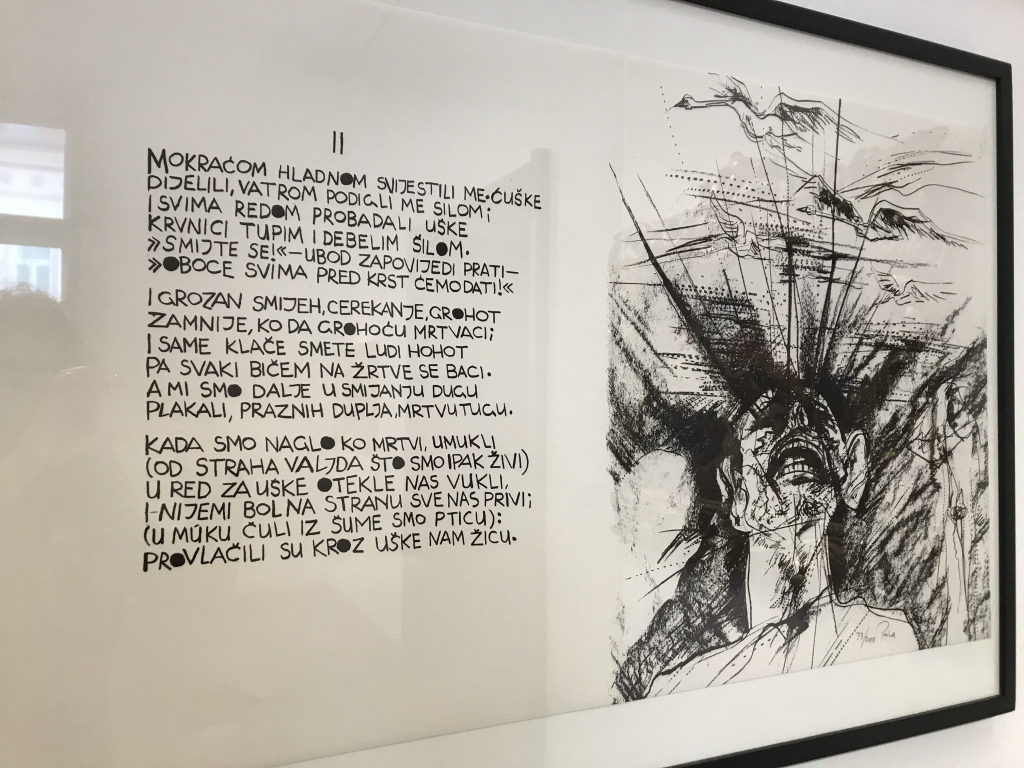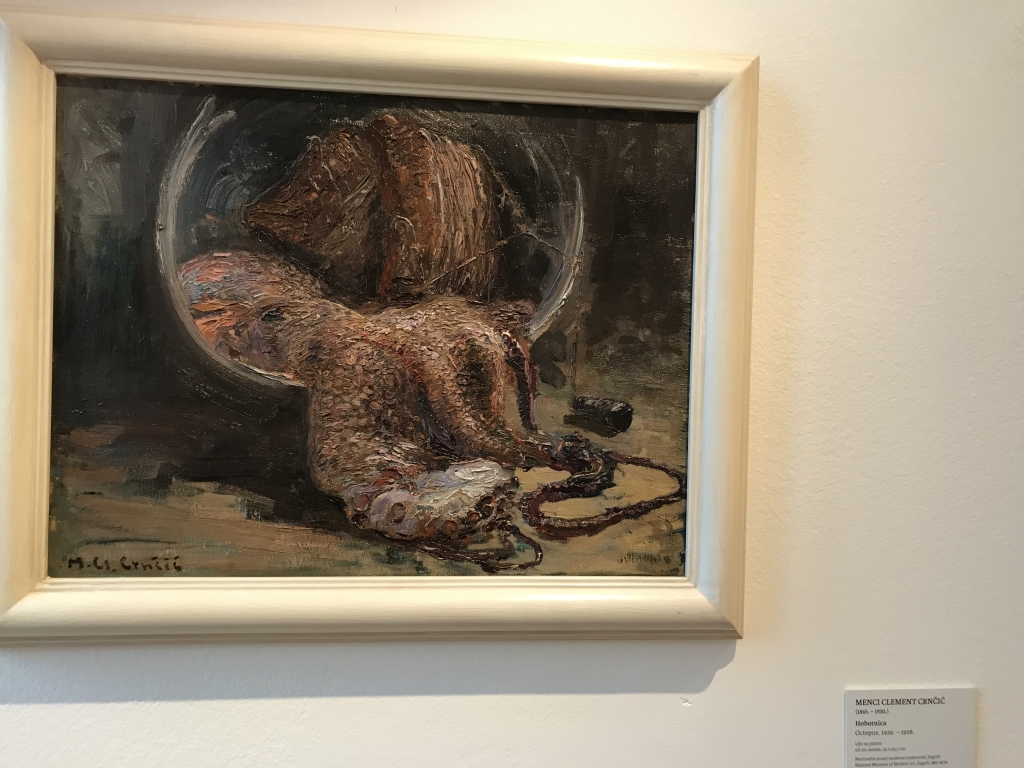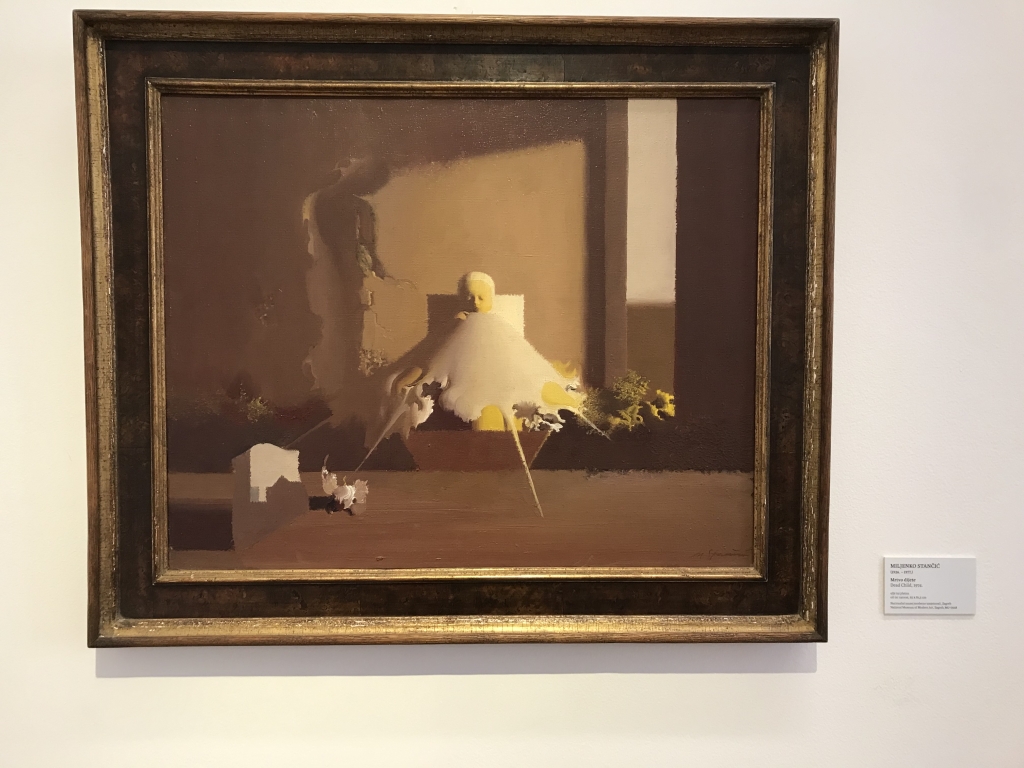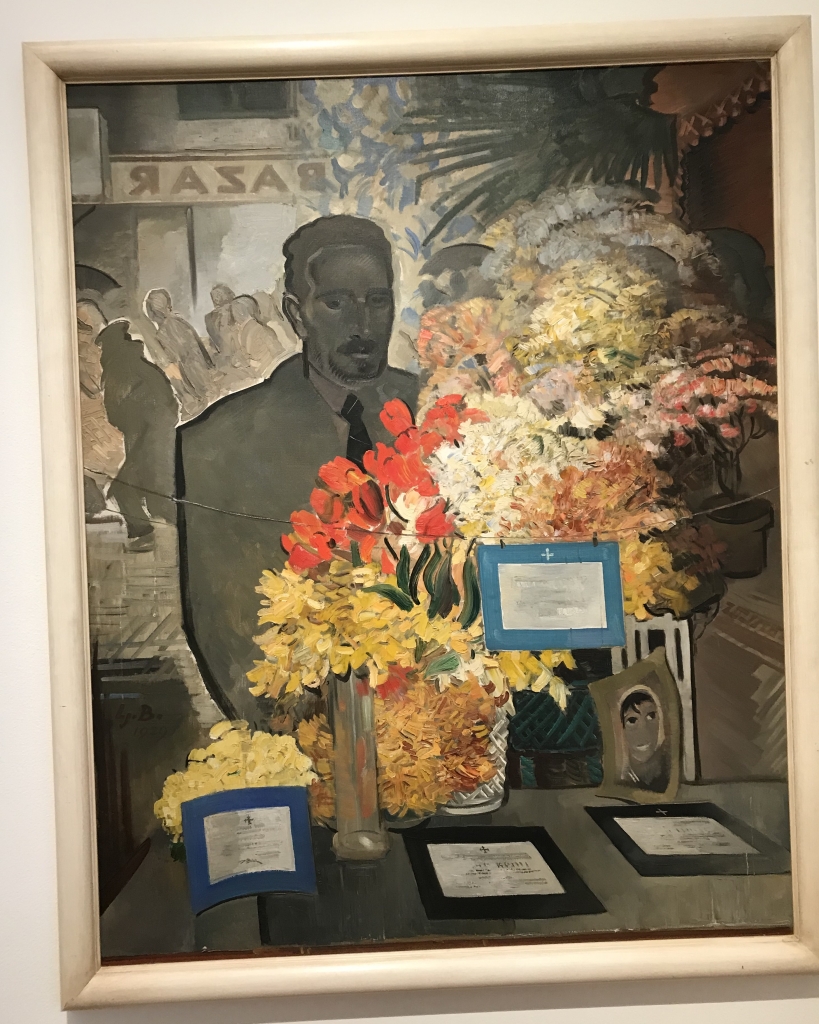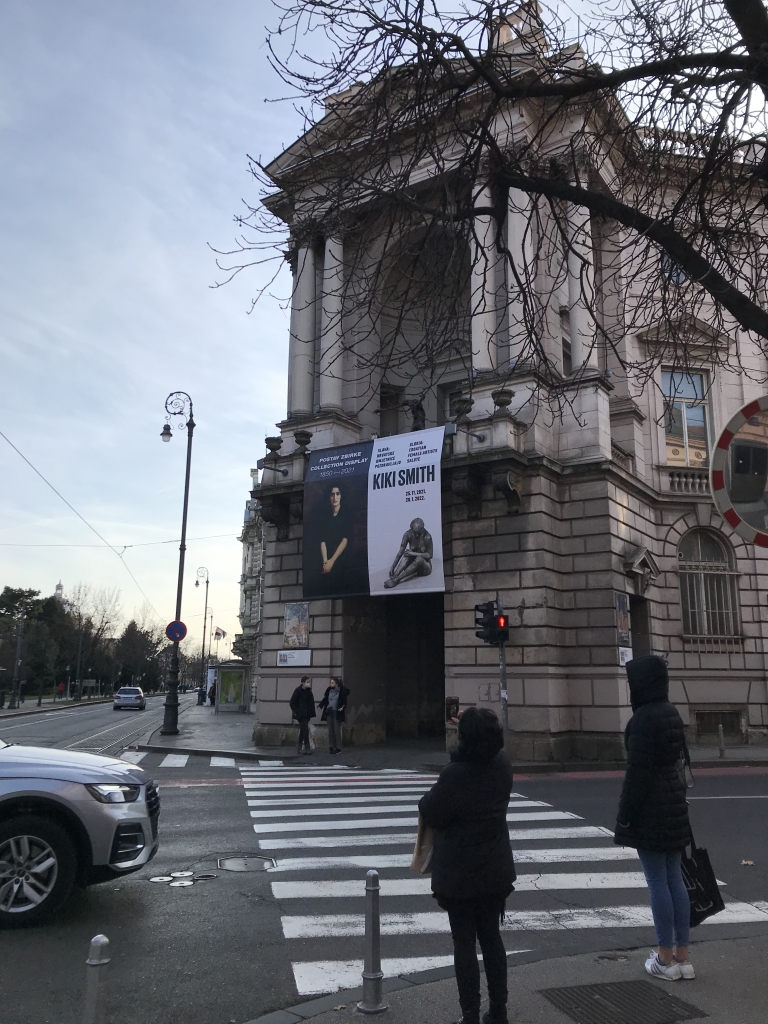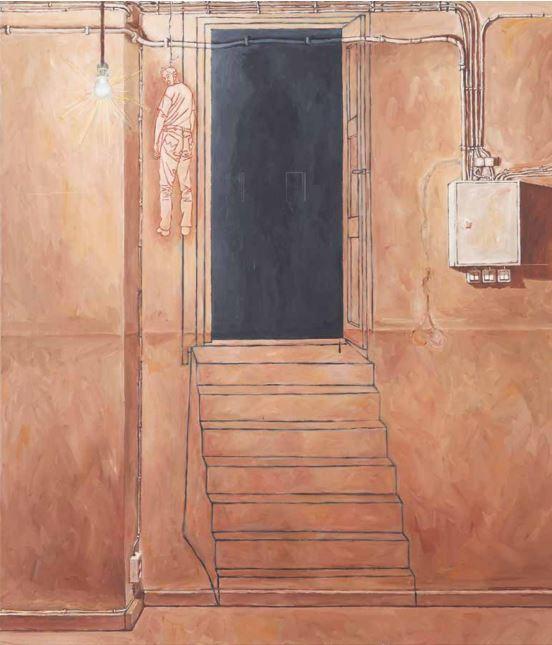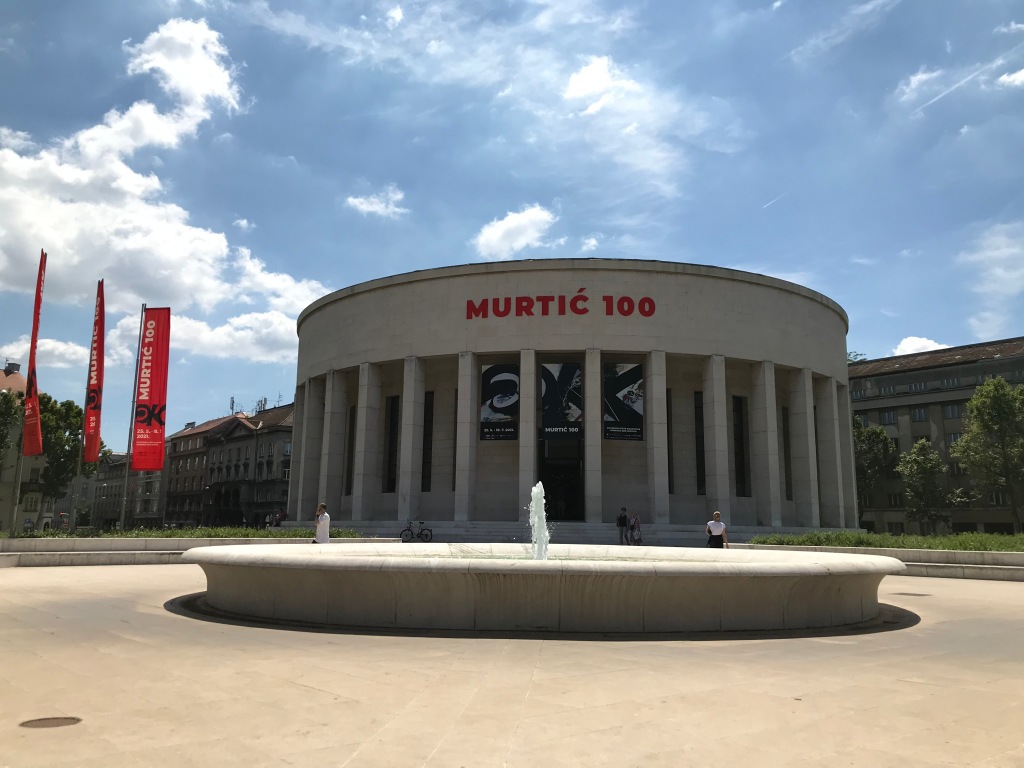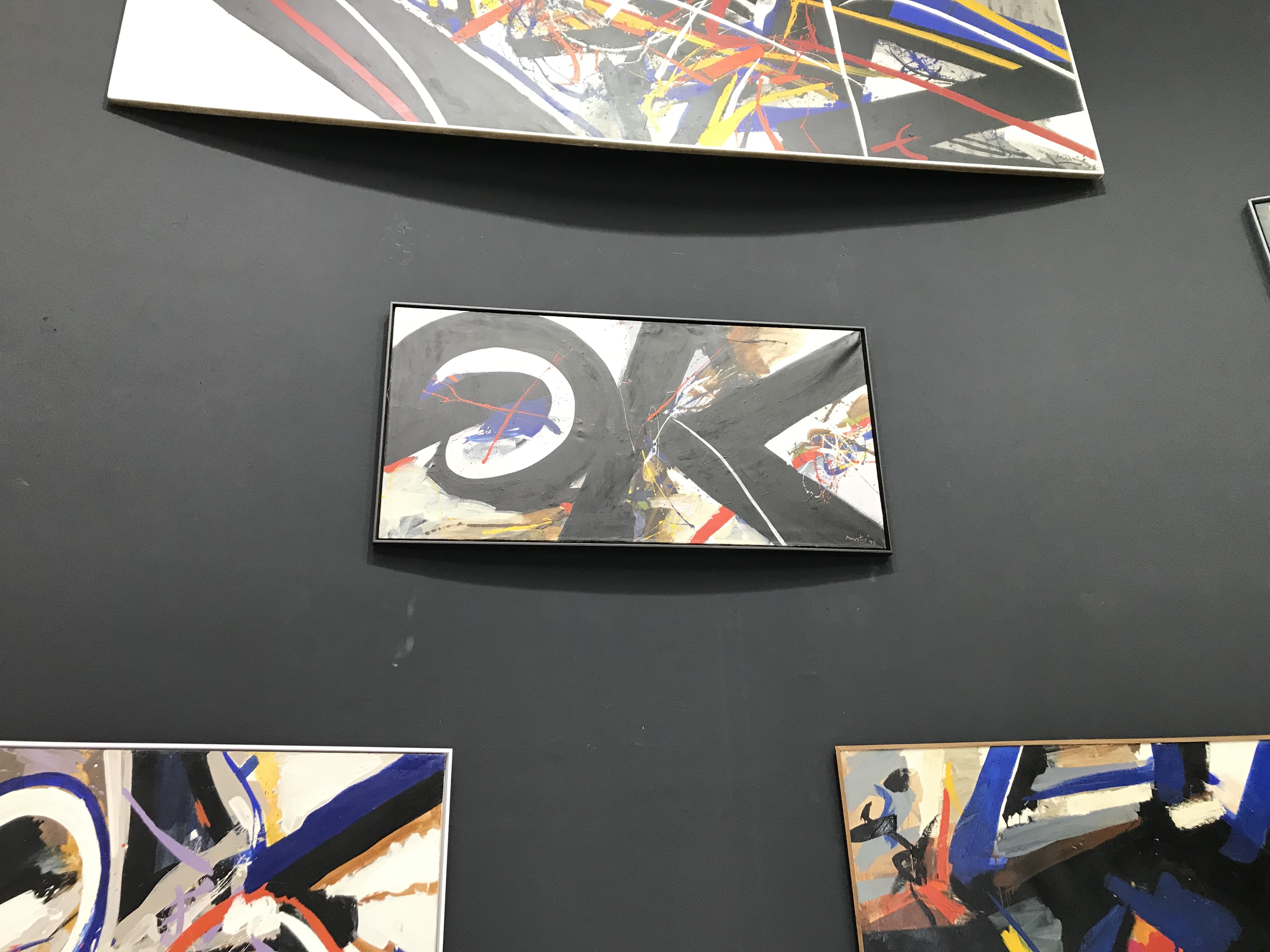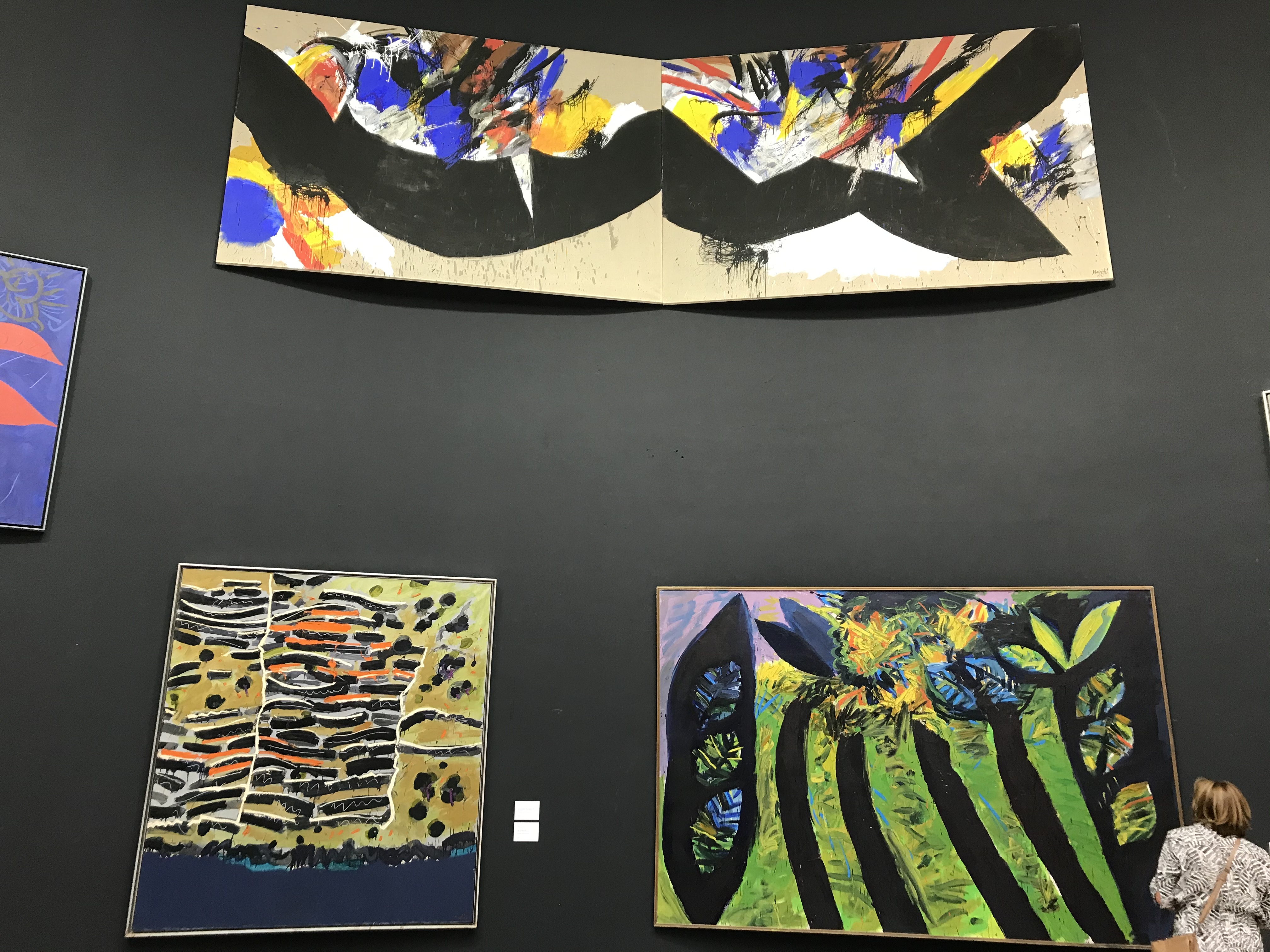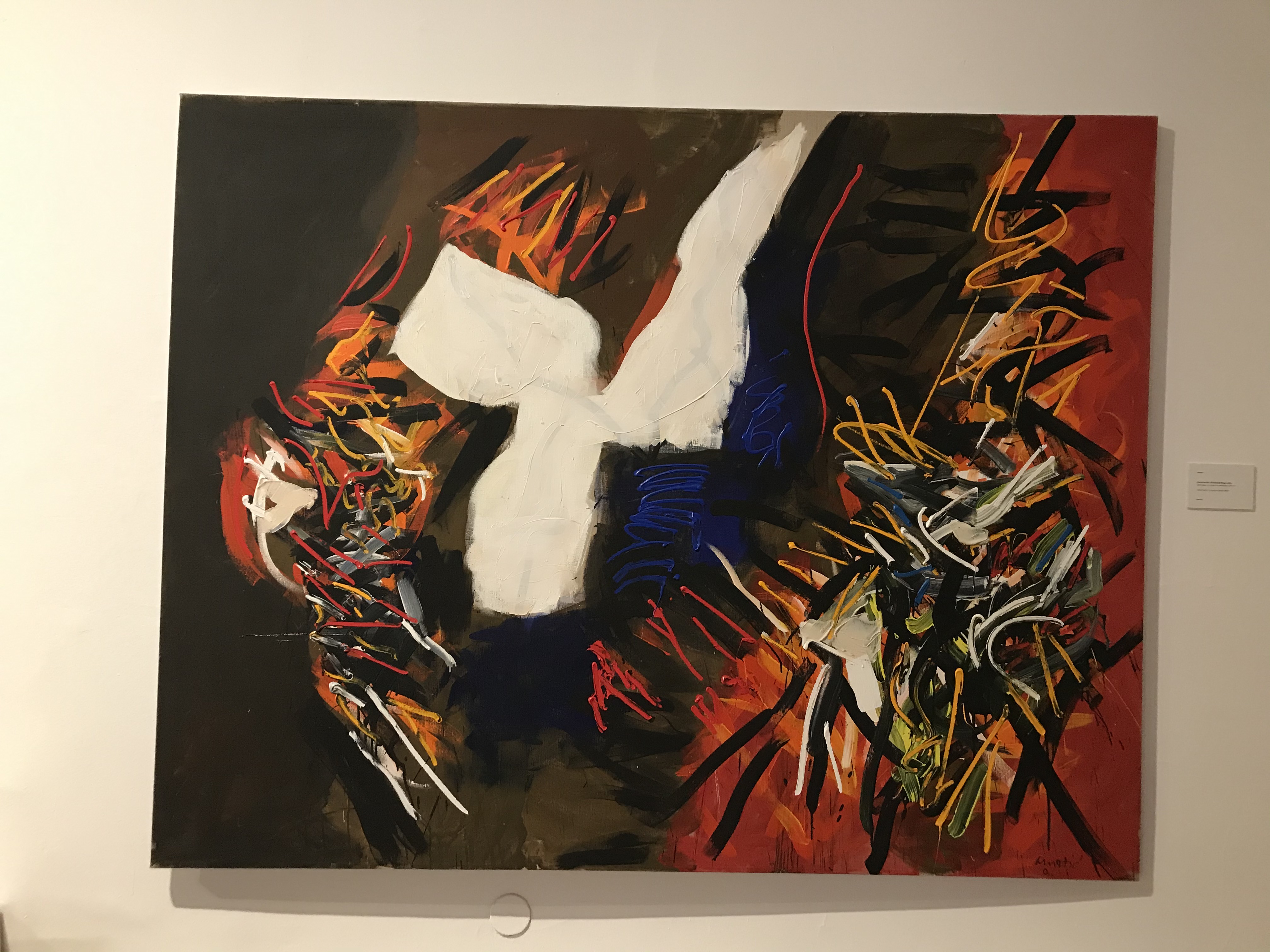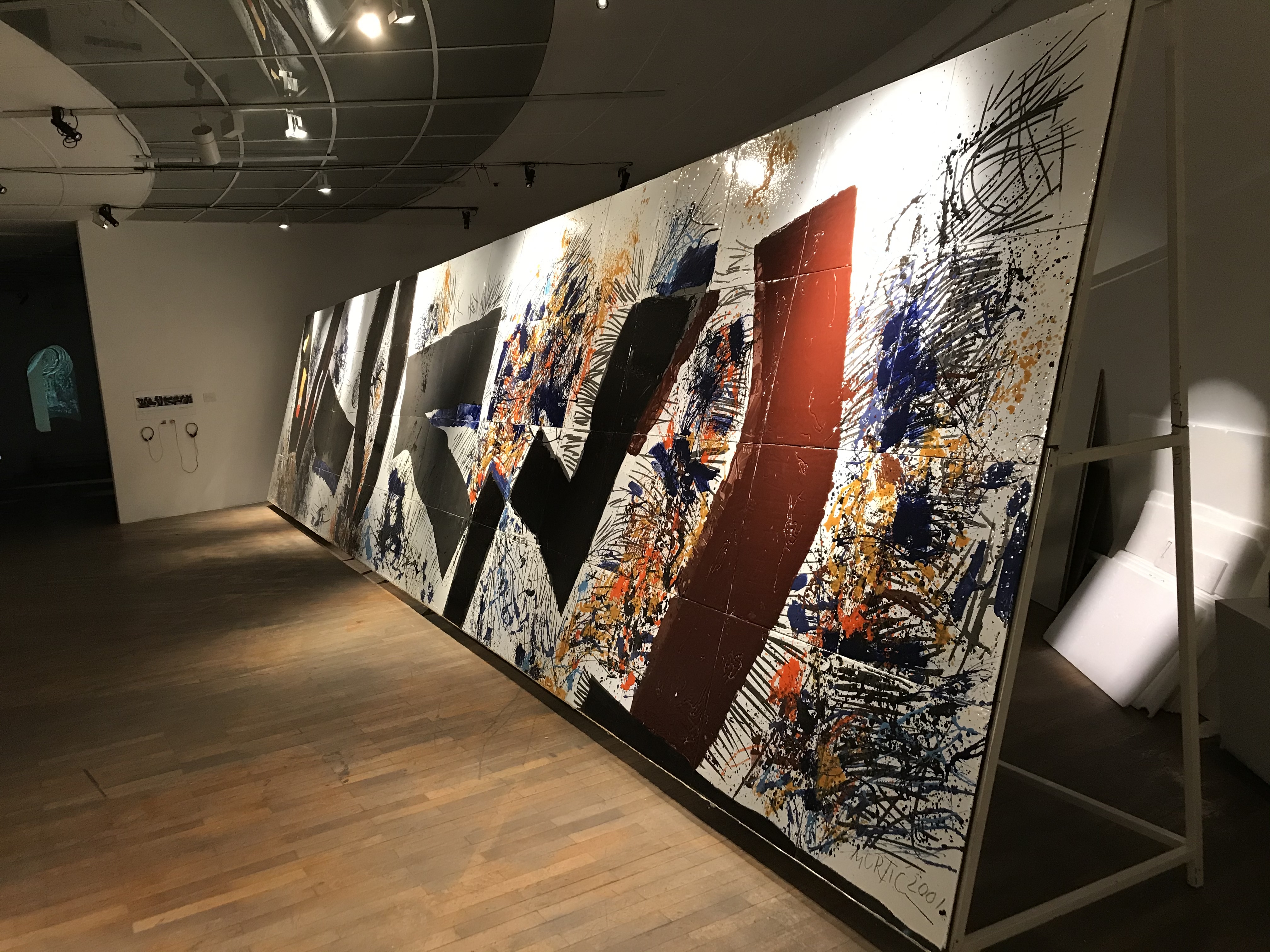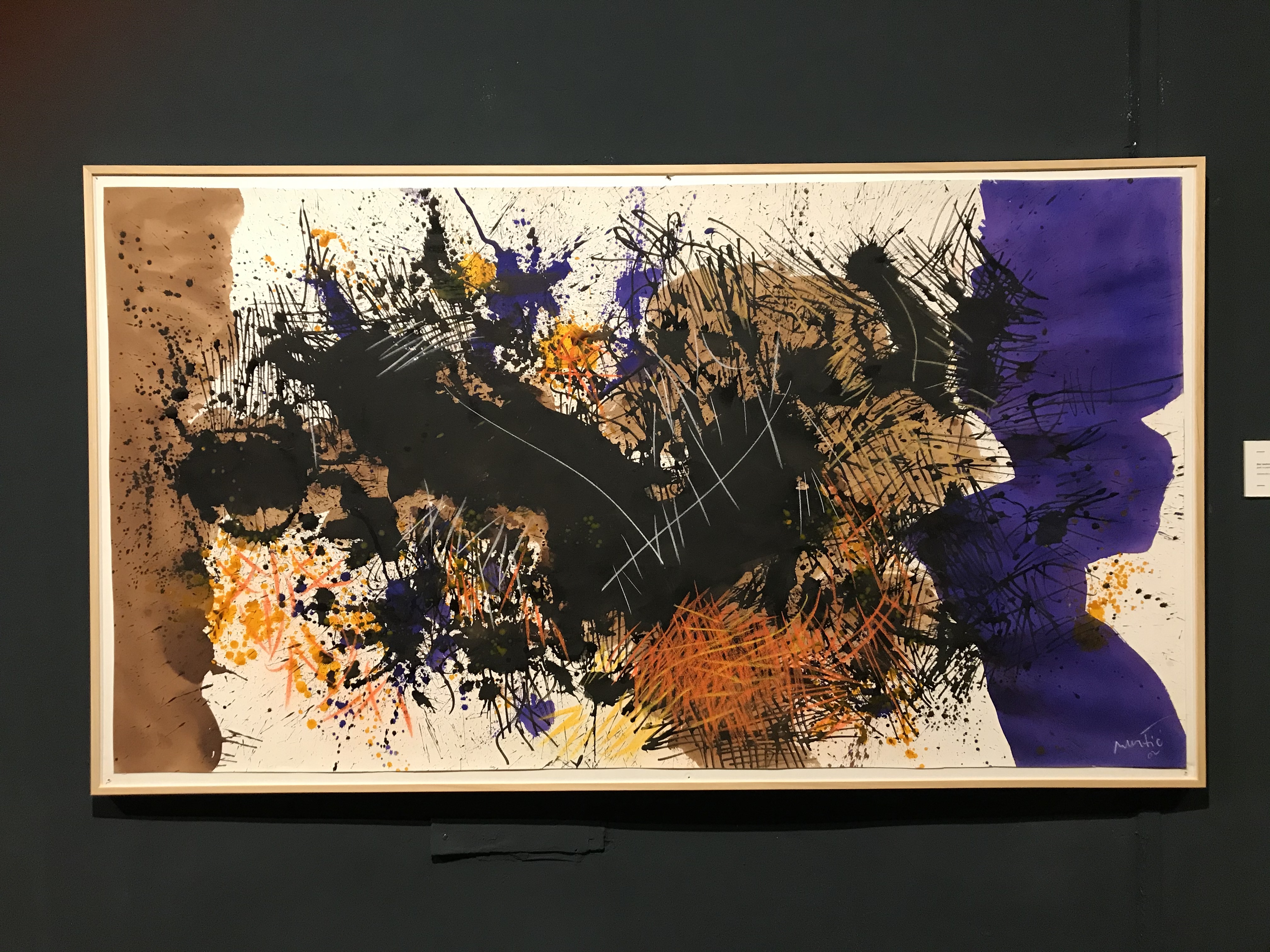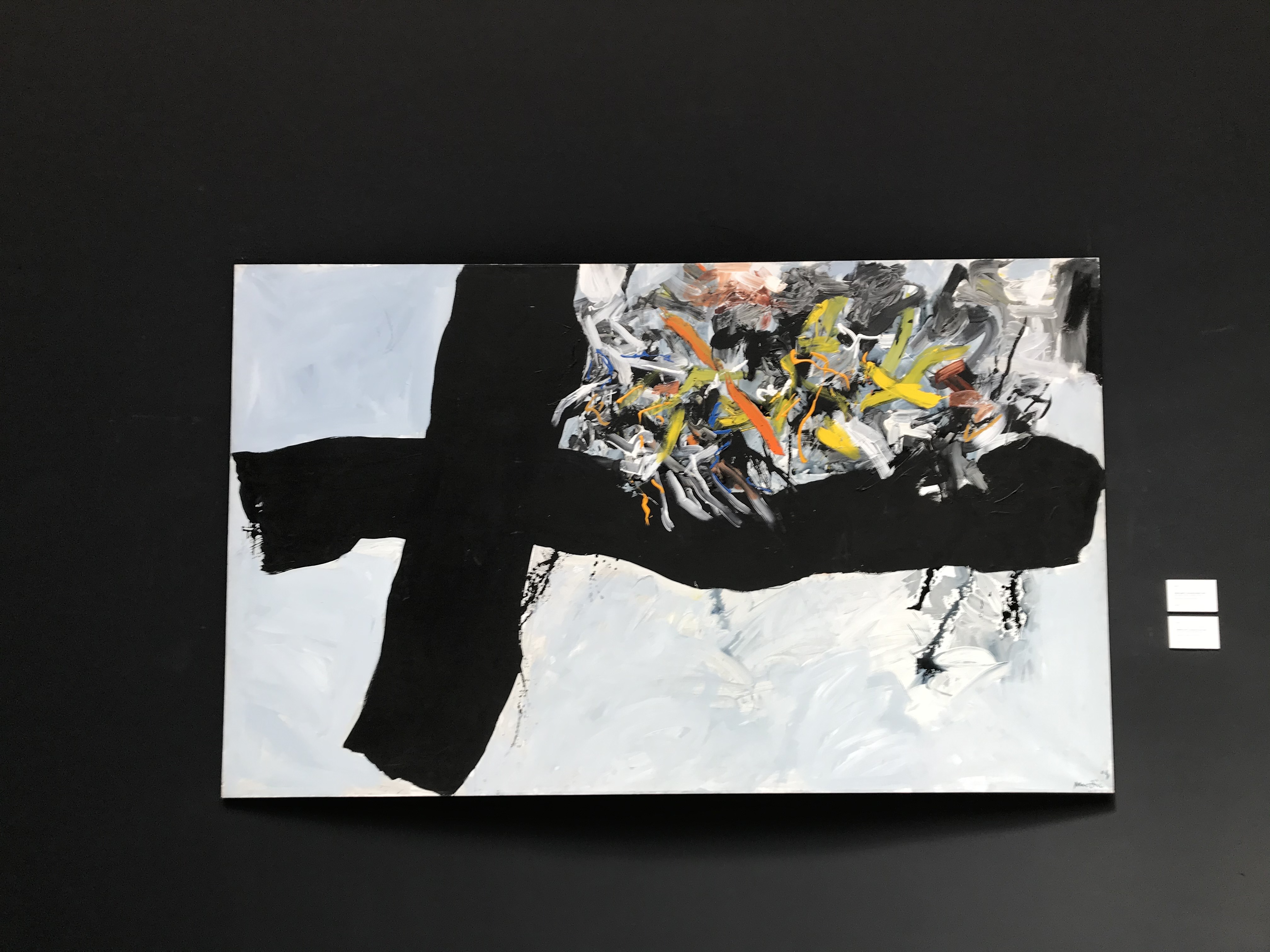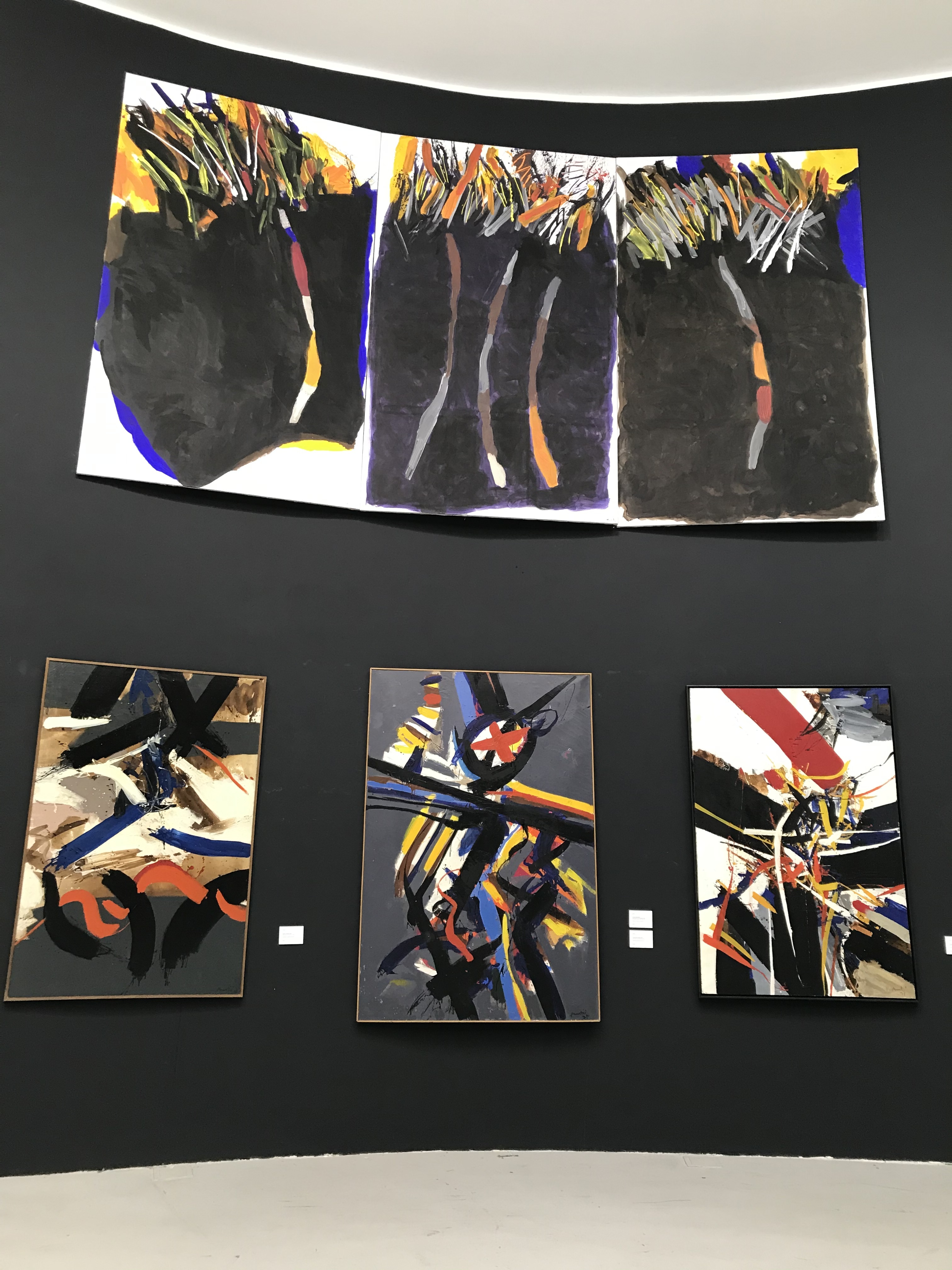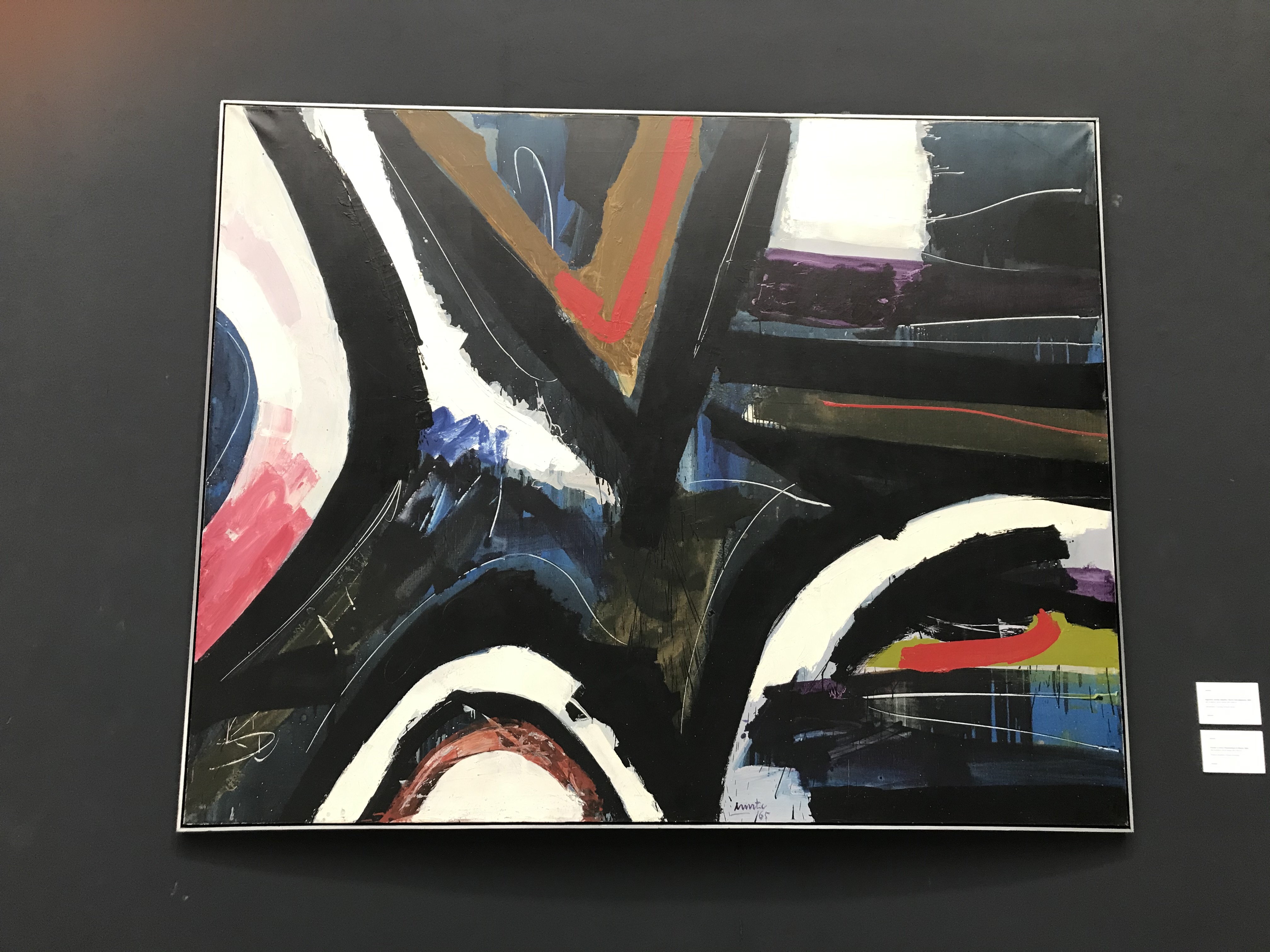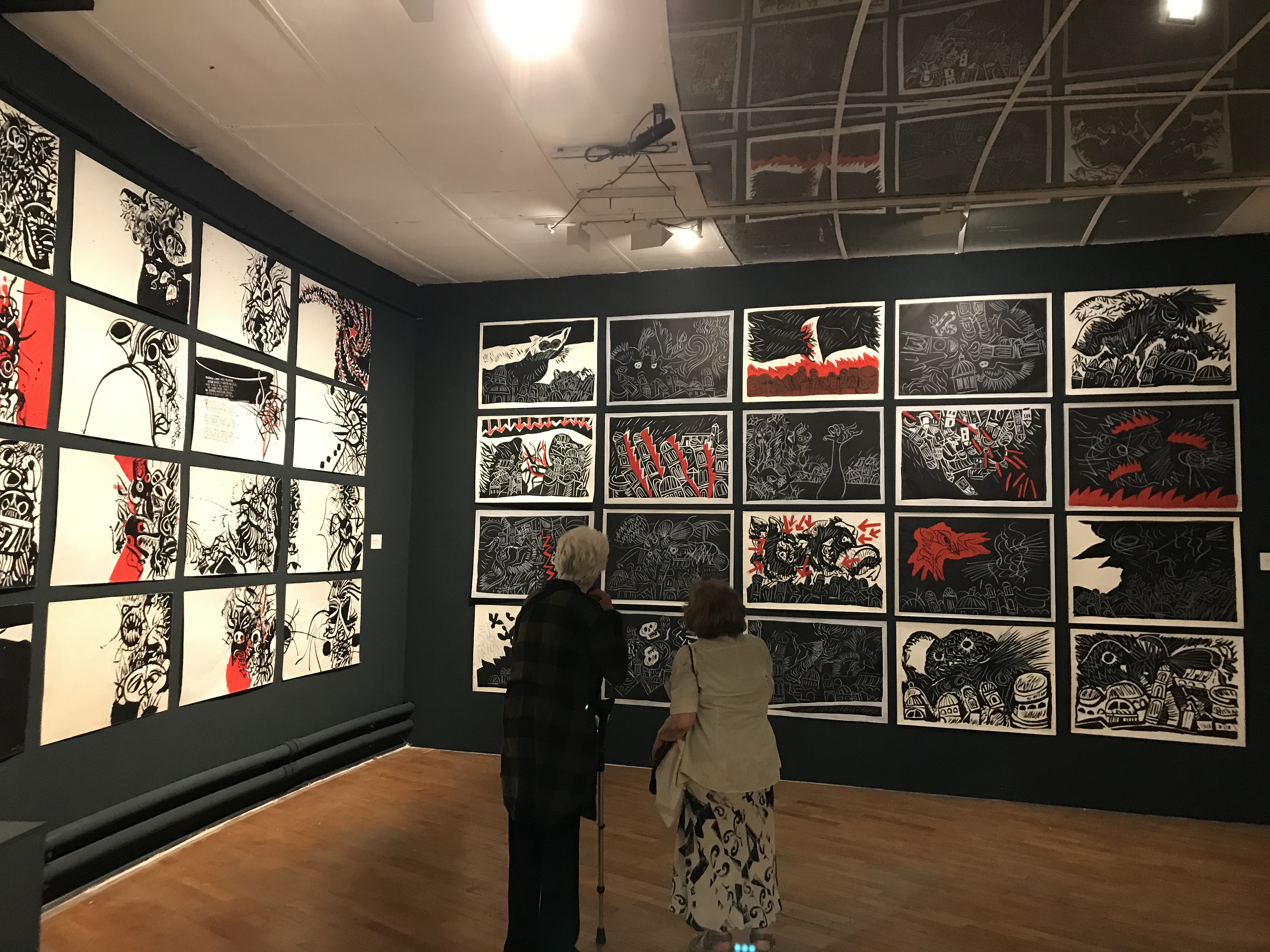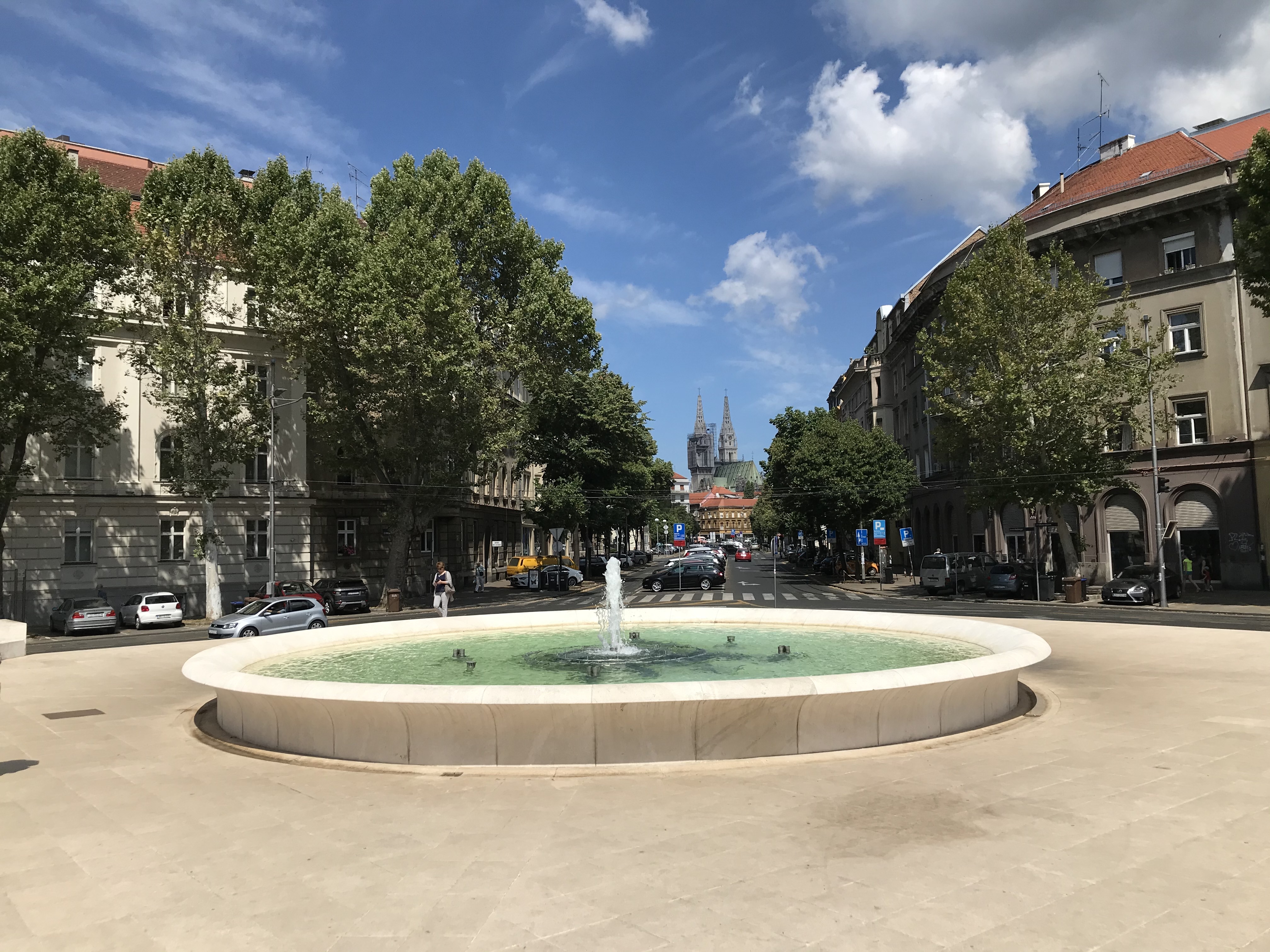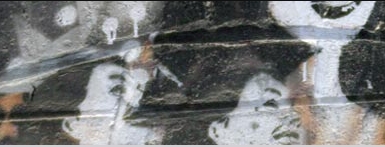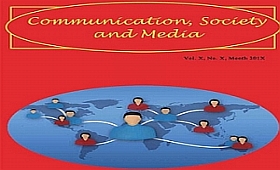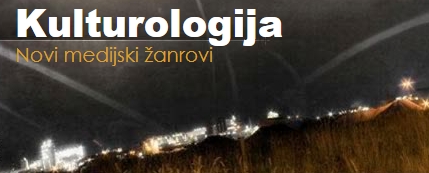Glory: Croatian artists greet Kiki Smith, presents New York’s authentic artist Kiki Smith (1954) with 19 conceptualized multidisciplinary works (sculpture, jacquard tapestry, installation, drawings and graphics) in comparison with the works of 13 Croatian artists who have created over 100 years – Slava Raškaj, Nasta Rojc, Milena Lah, Nives Kavurić Kurtović, Edita Schubert, Vlasta Delimar, etc. – questioning nature, femininity, physicality and mortality, through “a position of solidarity and sisterhood that transcends all current relations of power and planetary glory” as the NMMU director Branko Franceschi said.
Kiki Smith’s reduced, figurative forms are all the more impressive when they use bodily excretions (saliva, blood, urine) and the weaving principle of female intuition, thus creates in jacquard tapestries what Judith Butler calls “bodies that matter.”
Croatian artists also questioned the feminist preoccupation by tearing down the petty-bourgeois dress code, from Naste Rojc’s riding suit (Self-Portrait with a Horse, 1922) to exposing body of Vlasta Delimar (Untitled, 1991).
In a floor installation Soil, 1998-2018 with an impressive fifteen dead crows, Smith accentuated
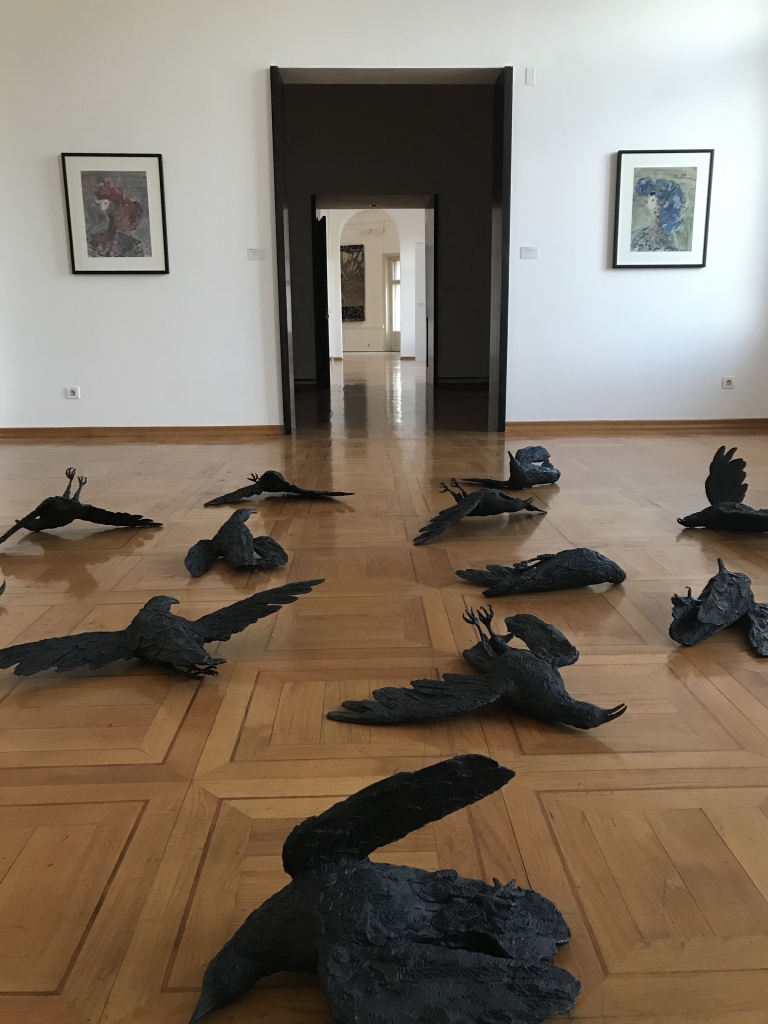
impressively the existential boundary – mortality and make an introduction to another exhibition: Exploatation of Death. Dying of everything in nature, mortality, often through the process, is the theme of this exhibition. Diana Vlaisavljević’s foreword exhaustively analyzes the presented works through the paradox of death (Judith and Holofernes, 1892 – Bela Čikoš Sesija, The Battle of Grobnik, 1906 – Celestin Medović, Adventure is Adventure, 2004 – Lovro Artuković), “meat is murder” (Dead Sheep, 1935 – Vladimir Becić), eschatology and the end of the world (Flood, 1932 – Krsto Hegedušić, Atomic mushroom – Kamilo Tompa), death as a biological fact (From my garden, 1956 – Ljubo Babić, After all – Stjepan Gračan), final farewells (At the door of death, 1904 – Mirko Rački. Dead child, 1954 – Miljenko Stančić) and death is not the end (Christian hope based on the critique of human weaknesses at the Crucifix, 1989 – Branko Ružić, through depictions of skulls and the motif of dance macabre – Đuro Tiljak, Hrvoje Šercar, Vanja Radauš).
Unlike Kiki Smith’s sincerity and primacy in her approach to existential art, the title Exploatation of Death cannot escape the impression that this is, linguistically speaking, a parasitic position of civilization, and to a sincere artist this depravity through human fear or greed should not be the goal. To conclude in the end of narrative philosophy: “whereof one cannot speak, thereof one must be silent“ (Wittgenstein).
Ph.D Vesna Srnić, MV president
Images by MV: Courtesy of the NMMU


